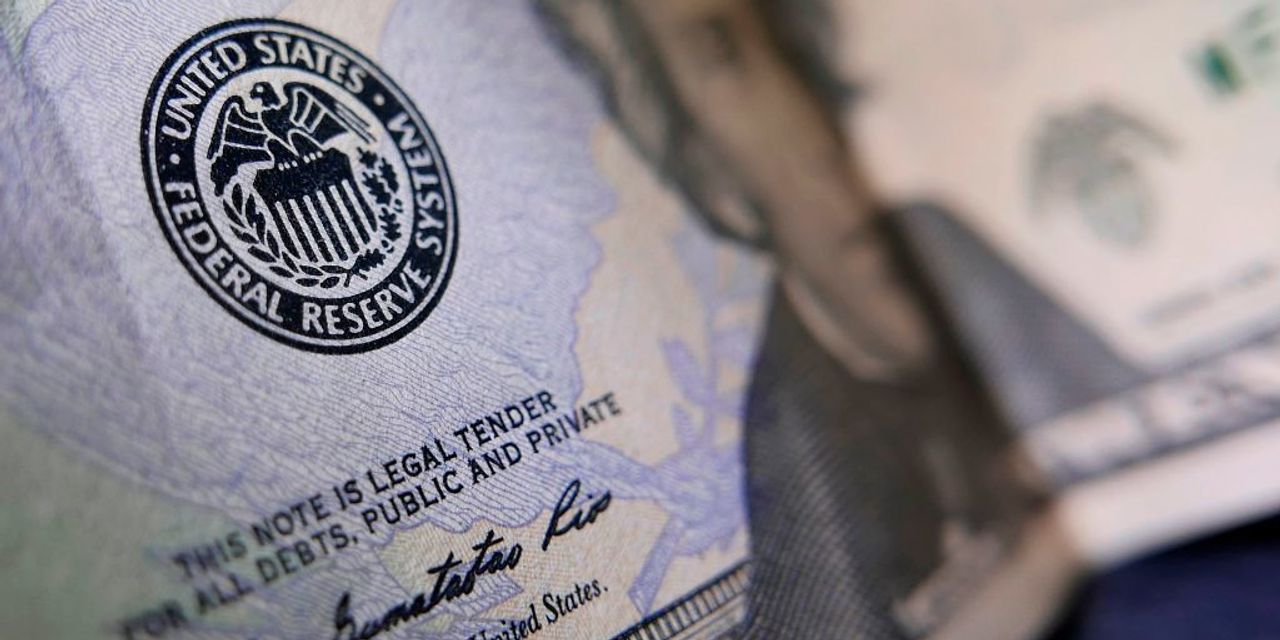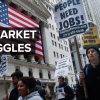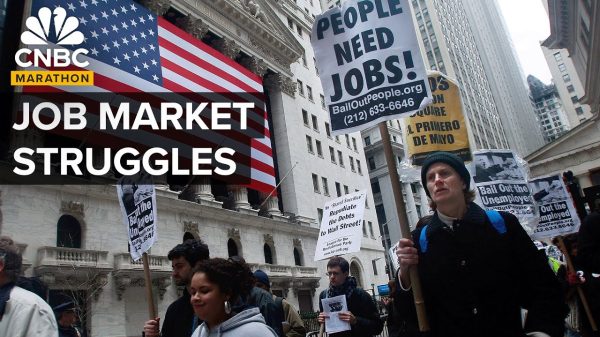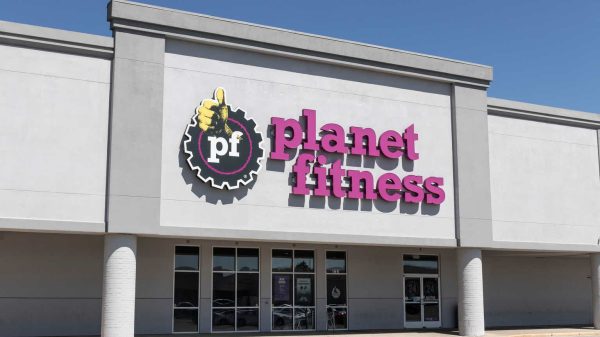The Federal Reserve’s banking report released on Monday came in just as expected.
Lenders tightened credit conditions in the first quarter and expect to continue doing so throughout the year, the Senior Loan Officer Opinion Survey showed. Demand for loans is weakening. That’s what five percentage points of interest-rate increases within about a year—the most aggressive campaign in a generation—will do to banks.
Arguably, it could have painted a far worse picture, given that higher rates were one of the driving forces behind the collapse of Silicon Valley Bank and First Republic.
Unfortunately, the fact that banks are tightening conditions along with the Fed doesn’t say a lot about how much further interest rates will rise. For what it’s worth,
Goldman Sachs
strategists on Monday argued that the Fed won’t cut rates as much as markets are expecting later this year.
Traders are beginning to think the Fed will hike rates again in June, according to the CME FedWatch tool. Odds are now at 17% for another move, compared with a 0% chance a week ago.
After that, who knows—inflation data for April are due out Wednesday. Even if they are cooler than expected, they’re very likely to still be too hot for the Fed.
It’s also not clear how badly tighter credit conditions are hurting the economy. Chicago Fed President Austan Goolsbee said Monday he’s “getting vibes” that a credit squeeze is beginning. That doesn’t sound too serious, yet.
Across the Atlantic, European Central Bank President Christine Lagarde last week appeared alarmed that demand for loans had weakened the most since the 2008-09 financial crisis. Growth, for now, is nevertheless holding up better than expected. And the ECB is expected to keep raising interest rates next month as well. The Bank of England announces its latest decision Thursday.
There will come a point when it will be clear that central banks have done enough to rein in inflation. We’re not there yet.
—Brian Swint
*** Join Barron’s associate editor Reshma Kapadia today at noon for a discussion with Savita Subramanian, head of U.S. equity & quantitative strategy and global ESG research at BofA, as well as one of Barron’s 100 Most Influential Women in U.S. Finance. During the discussion, Subramanian will talk about why she sees the potential for double-digit gains in the S&P 500 despite recent bearishness, identify the best positioned sectors, offer an outlook for corporate margins in an age of de-globalization, and explain why inflation tends to hit women harder. Sign up here.
Try your hand at this morning’s Barron’s Daily crossword puzzle and sudoku games. For all games, including a digital jigsaw based on the week’s cover story, click here.
***
Bank Stress Cited as a Top Threat to Economy
Stress in the banking sector has become a top vulnerability to the U.S. financial system, a report by the Federal Reserve said on Monday. It was the second-highest risk highlighted, despite actions to shore up banks. Stress could lead financial institutions to contract the supply of credit.
- The Financial Stability Report is based on a survey of market experts, economists, academics, and others. Since the last report in November 2022, Silicon Valley Bank, Signature Bank, and First Republic Bank failed after risk-management concerns sparked a run on customer deposits.
- The report said that, overall, the banking sector remained resilient, especially after actions by the Fed and other regulatory agencies to alleviate the strain. But some sectors, including money-market funds, stablecoins, and hedge funds, have elevated potential for trouble.
- The Fed’s Senior Loan Officer Opinion Survey said 46% of banks tightened credit for the widely watched commercial and industrial loans for large and middle-market firms in the first quarter, an uptick from 44.8% in the prior survey.
- A major concern is commercial real estate loans held by small banks, particularly in offices with low occupancy rates. “It’s no secret there are a lot of office loans coming due in 2023 and 2024,” said Bain Rumohr, Senior Director at Fitch Ratings covering banks and nonbanks.
What’s Next: Potential risks to U.S. financial stability over the next 12 to 18 months most cited by the New York Fed’s survey were persistent inflation and monetary tightening, banking-sector stress, and U.S.-China tensions, followed by commercial and residential real estate and the Russia-Ukraine war.
—Janet H. Cho and Karishma Vanjani
***
President Meets Congressional Leaders on Debt Ceiling
President Joe Biden is scheduled to meet with leaders of both parties from the House and Senate on Tuesday as the deadline for raising the nation’s debt limit rapidly approaches.
- Republicans, led by House Speaker Kevin McCarthy, are demanding a raft of spending cuts in exchange for lifting the ceiling. Biden and fellow Democrats argue that discussions over the budget should take place in the normal lawmaking process and that approving the debt ceiling increase should be unrelated to debates over spending.
- The point when the U.S. will run out of money to pay for its expenses will arrive as early as June 1, according to Treasury Secretary Janet Yellen. If no agreement is reached before then, the Biden Administration will have to either override Congress to issue more bonds, or Congress could temporarily suspend the limit. The third option of default appears unthinkable.
- Yellen said there are “no good options” to avoid dire circumstances if Congress fails to raise or suspend the limit. “It’s widely agreed that financial and economic chaos would ensue,” she said May 7.
What’s Next: An agreement appears unlikely at this meeting, but any signs of progress—or a further stalemate—could have implications for markets. A credit event would almost certainly trigger a recession. The impasse may already be increasing the cost of borrowing for the government.
—Brian Swint
***
Biden Proposes New Rules to Pay Stranded Airline Passengers
As summer travel season kicks off, President Joe Biden and Transportation Secretary Pete Buttigieg announced a FlightRights.gov website and plans to make airlines more accountable when passengers are stranded by delayed or canceled flights. Passengers who encounter problems can file a complaint.
- Biden wants to require U.S. airlines to provide passengers with meals, hotels, taxis, ride shares, rebooking fees, cash, air miles or travel vouchers when they are stranded. When the European Union required airlines to compensate passengers for flight delays, he said delays declined.
- A Government Accountability Office report found that flight disruptions in recent years have been driven by factors within airlines’ control, The Wall Street Journal reported. Disruptions have lasted longer and have been more common amid newly surging demand.
- International travel demand is outpacing domestic demand and driving fares to their highest levels in five years. Average round-trip airfares are up 24%, from 2019 to $1,032. Airfares to Asia are up more than 60%, to $1,619, according to online travel site Hopper.
- U.S. carriers are already required to give refunds if a flight is canceled or significantly delayed and a customer decides not to travel. The White House said no airline currently guarantees cash compensation in cases of preventable delays and cancellations.
What’s Next: The Transportation Department has proposed requiring airlines to disclose ticket prices upfront, including fees for baggage, internet access, seat changes, or other hidden charges. More accurate, transparent prices will help people more easily compare prices and find deals, Biden said.
—Janet H. Cho
***
Palantir Notches Second Consecutive Profitable Quarter, Praises AI
Palantir Technologies
shares jumped 22% on Monday after the technology company talked up its artificial intelligence platform, saying it is going after one of the world’s biggest opportunities. CEO Alex Karp said large language models, the core of generative AI tools, “will transform” enterprise software. The stock was trading up 18% in Tuesday’s premarket.
- Palantir’s platform, which it calls AIP, is rolling out to some customers this month. The company, which makes analytics software for companies and governments, topped expectations with first-quarter revenue of $525 million and earnings per share of a nickel.
- It was the second-straight quarter of profit, measured by generally accepted accounting principles. Palantir expects to be profitable again in the June quarter and to stay profitable for the third and fourth quarters.
- Commercial revenue rose 15% from last year’s first quarter and 39% from the December quarter, at $236 million. Government revenue rose 20%, to $289 million. Overall, customer count was up 41% from a year ago and 7% from December.
- Palantir raised its guidance for the year, and is now expecting full-year revenue of $2.185 billion to $2.235 billion, and full-year adjusted income from operations of $506 million to $556 million, beating expectations.
What’s Next: Artificial intelligence will be featured at Google’s annual developer conference on Wednesday. The company plans to announce several generative AI updates, including a general-use large language model, CNBC reported.
—Liz Moyer and Eric J. Savitz
***
PayPal’s Operating Margin Growth Outlook Disappoints
PayPal Holdings
raised its profit outlook for 2023, saying expectations for revenue growth for the year are higher. CEO Dan Schulman told MarketWatch the payments company could see high-single-digit revenue growth, though its outlook for operating margins disappointed.
- First-quarter revenue of $7.04 billion beat expectations, and adjusted earnings per share of $1.17 were higher than analysts’ estimates. Schulman said growth from e-commerce was better than expected.
- Total payment volume in the first quarter was $354.5 billion. That is the value of transactions flowing across its platform. The number beat expectations by about $10 billion. PayPal got a boost during the Covid-19 pandemic as people were stuck at home buying items online.
- Schulman said the company was working to improve its checkout and digital wallet products. The quarter included a 13% gain in payment transactions to 5.8 billion, and 433 million in total active accounts.
- PayPal expects second-quarter revenue to increase 6.5% to 7%, slightly ahead of expectations. The company also expects adjusted earnings per share of $1.15 to $1.17, slightly below expectations.
What’s Next: PayPal also raised its full-year adjusted-profit forecast to about $4.95 a share. That still beats consensus and is higher than its earlier forecast, but adjusted operating margin is seen expanding slightly less than expected.
—Liz Moyer
***
Be sure to join this month’s Barron’s Daily virtual stock exchange challenge and show us your stuff.
Each month, we’ll start a new challenge and invite newsletter readers—you!—to build a portfolio using virtual money and compete against the Barron’s and MarketWatch community.
Everyone will start with the same amount and can trade as often or as little as they choose. We’ll track the leaders and at the end of the challenge the winner whose portfolio has the most value will be announced in The Barron’s Daily newsletter.
Are you ready to compete? Join the challenge and pick your stocks here.
***
—Newsletter edited by Liz Moyer, Patrick O’Donnell, Rupert Steiner
Read the full article here













